- W. Robert Midden
- http://www.bgsu.edu/nwo/
- Assoc. Vice Provost
- iEvolve with STEM
- http://www.bgsu.edu/nwo/current-grant-projects/ievolve.html
- Bowling Green State University, Sandusky City Schools, Perkins Local Schools
- Dr. Emilio Duran
- Project Co-PI, Associate Professor
- iEvolve with STEM
- http://www.bgsu.edu/nwo/current-grant-projects/ievolve.html
- Bowling Green State University
- Judith Steiner
- Project Manager
- iEvolve with STEM
- http://www.bgsu.edu/nwo/current-grant-projects/ievolve.html
- Bowling Green State University
- Dr. Rick Worch
- Research Co-Director, Associate Professor
- iEvolve with STEM
- http://www.bgsu.edu/nwo/current-grant-projects/ievolve.html
- Bowling Green State University
Public Discussion
Continue the discussion of this presentation on the Multiplex. Go to Multiplex





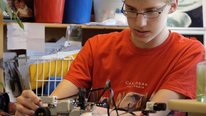
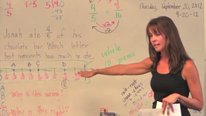

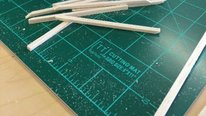
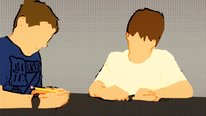
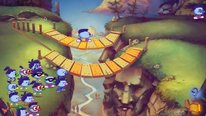










Jorge Solis
Assistant professor
Thank you for sharing your project. What a great way to think about broadening STEM access! I was wondering if and how you work with your students differently given their varied age groups (3rd-8th grade)?
W. Robert Midden
Assoc. Vice Provost
First,we tried to align projects to state standards at each grade level. We also definitely considered what projects would best fit students’ developmental levels. Additionally, lead scientists developed projects, both prior to and during summer institute training, with input from teachers and the project team before implementation.
Judy Steiner, Project Manager
Michel DeGraff
Professor
Great project! And it’s so good to see the children outdoors and getting close to nature. Is there a part of the project where the students also look at public policy? For example, do they get to consider how politicians also influence issues such as water quality (think of Flint, for example!) and how their own activism can also also contribute to a better planet, alongside their scientific knowledge?
W. Robert Midden
Assoc. Vice Provost
Michel-
We do indeed refer students to such issues at times and do include an abundance of information about the environmental, public health, economic, social and political issues that relate to these science projects. We are striving to integrate the science research across the curriculum with multiple links to learning standards in the social studies, language arts, and mathematics. Our curriculum development team has developed numerous cross curricular connections. The research projects each have multiple facets that create a rich, meaningful context for multi-disciplinary and interdisciplinary learning.
Bob Midden, P.I.
Michel DeGraff
Professor
Excellent! Yours would, thus, be the sort of project to demystify the traditional divide between STEM and the Humanities. Here I’m thinking of recent discussion such as the work of Danielle Allen on prioritizing the Humanities over STEM through the argument that it’s the former that can really shape distributive justice. Are these curricular connections between STEM and social studies available online for other to benefit from?
W. Robert Midden
Assoc. Vice Provost
The curricular connections are still being developed. We would like to disseminate as widely as possible when they are developed to a stage that is suitable for others to use.
We do not aim to prioritize any disciplines and instead use the disciplines as a set of tools to guide and empower our thinking and actions, choosing that tool or combination of tools at any given moment that is most useful for the purpose at hand.
Marcelo Worsley
Assistant Professor
Wonderful project. I really liked how the program across the different grades feed into each other. I’d really be interested in hearing more about how student engagement and motivation changes over the course of a given year, and across the different grades. Is this something that you’ve been able to measure?
W. Robert Midden
Assoc. Vice Provost
We have a rigorous research program that is drawing from the theory of student engagement and motivation and are monitoring that with a comparison group of teachers and students chosen to match student demographics and teacher and school characteristics. We are working with Horizon Research, Inc. and with Stuart Karabenick at the University of Michigan, an expert in motivation and engagement, on that aspect of the project. We hope to publish findings within the next couple years.
Bob Midden, P.I.
Jorge Solis
Assistant professor
Thanks Robert for sharing your great work! Student engagement through contextualized science activity like Citizen Science Research looks very promising. Along the same lines, could you share some examples of science questions or topics that either were of high interest to your students or that students themselves identified?
W. Robert Midden
Assoc. Vice Provost
Our project is different from some approaches to student participation in scientific research. We want students to recognize that the work they are doing is contributing to real science research: they use protocols for data collection and analysis that professional scientists verify will generate scientifically valid data that will contribute to a larger effort and can be used for true scientific discovery. Students are participating in citizen science research projects that have international, national, or regional scope that are led by professional scientists. We help students recognize and appreciate that they are able to contribute to real science discovery as part of their classroom learning experience. We also help students recognize and appreciate that this work has the potential to benefit their local communities by addressing issues that relate to environmental integrity and public health as well as the economy. We are investigating the impact that recognition and appreciation has on student motivation and engagement.
This means that in most cases students do not design their research projects or their research protocols because they lack the knowledge and expertise that is needed to design projects and protocols that can make significant and valuable contributions to the professional body of scientific knowledge. But they can recognize that the work they are doing has real value for others: the science community and their local and regional communities. We are investigating whether that has a significant impact on their engagement and motivation.
We understand and appreciate the educational and motivational value of students pursuing their own personal interests and designing their own investigations. Such activities are also included as part of the educational agenda in these classrooms. Indeed, student participation in the Citizen Science Research projects can help them learn how to conduct such investigations and inform them about the realm of some of the possibilities. But student-generated and student-designed investigation is not the focus of our project.
Information about the citizen science research projects in which the students participate include: GLOBE, Monarch Watch, FrogWatch, and others. We have pollinator gardens for monitoring bees and butterflies, conduct water quality research in Sandusky Bay and local streams, monitor amphibian ecology in vernal pools, and study rain garden design and function and impact on local water quality. This research is led by scientists from Ohio State University’s Stone Lab in Lake Erie, Bowling Green State University’s Herpetology and Marine Biology Labs, the Toledo Zoo and other local organizations and agencies.
Jorge Solis
Assistant professor
Thanks Robert. This background information is very helpful. The scope of this work is truly amazing to see in action.
Brian Drayton
All this sounds exactly right, and addresses questions we are working with on the Climate Lab project (an exploratory partnership between TERC and Manomet)… One question that seems important to address is: Do students get to see the scientists’ use of their materials, that is, do they see the impact beyond classroom analysis of their data?
Is the data cumulative? That is, do students this year compare their work with last year’s, etc.?
W. Robert Midden
Assoc. Vice Provost
Brian-
I agree that students seeing how their data is used is worthwhile. It has the potential to further increase student motivation and engagement but also provides additional opportunity for them to gain insight into the nature of the scientific process. We definitely intend to draw students’ attention to how their data is used but we also engage them in examination and analysis of the data, themselves – not only their data but also data collected by other students and other citizen scientists around the world. Students compare and contrast the data from their site to the data collected by other iEvolve students around Sandusky and also to data collected at other sites throughout the country and around the world. GLOBE, in particular, offers a rich and robust data set for these types of activities. Students can also read and study articles published by scientists from these data so they can learn more about the process of professional publication and how the data they collect contributes to that.
We are studying how students’ ability to articulate the nature of scientific inquiry (NOSI) changes as they participate in these learning experiences. Finding ways to improve the public’s understanding of NOSI might have a beneficial impact on decision making in our democratic society so we have a special interest in this outcome, in addition to the others that are targeted such as mastery of state learning standards.
Sarah Pidgeon
This project is phenomenal! I love to hear about citizen science happening with elementary and middle school students. It is so exciting to be able to provide students with an opportunity to engage in real world projects. I know that NYC Department of Education has been working on some different Citizen Science initiatives around water quality. It would be great to make a connection for sharing data!
W. Robert Midden
Assoc. Vice Provost
Would very much like to communicate about the NYC Dept of Ed CSR initiatives. What is the best way to do that? My email address is midden@bgsu.edu
Christine Cunningham
Awesome project! Love seeing students doing hands-on activities – especially liked their “groundbreaking” work! I’m looking forward to hearing Horizon Research and Stuart Karabenick’s findings.
W. Robert Midden
Assoc. Vice Provost
Thank you for your comment. Engineering is Elementary has been popular in our area and we have had a consistently high level of participation when we have offered teacher professional development for use of that curriculum.
Dilafruz Williams
I always enjoy watching students engaged. What rich assets you are drawing upon! You mention that the projects are led by scientists from Marine and Herpetology Labs, the Stone Lab, the Toledo Zoo, and Erie Soil and Water Conservation District. Did you create a structure for each of these organizations to ensure that your goals for the students would be met? Did Bowling Green already have partnerships with these organizations?
Also, I am interested in knowing more about students’ “motivation, engagement, and achievement.” I am curious about your results. What theoretical model for motivational engagement are you drawing upon? I am interested, since our DRK12 project also studies motivational engagement among middle schoolers along with development of STEM identity. Our project is Science in the Learning Gardens: Factors that Support Racial and Ethnic Minority Students’ Success in Low-income Middle Schools. It would be wonderful to see if there are overlaps: While we have teachers in schools as partners, you have community organizations as partners. We are designing curriculum to align with NGSS and using gardens as milieu for learning. Thank you for an exciting project!
Nancy Romance
Robert,
It is amazing to see students engage as citizen scientists. Although you mention that they follow protocols for data collection, you never know where the next great idea or discovery could come from. It may come from one of your young citizen scientists! What a valuable program.
Further posting is closed as the showcase has ended.